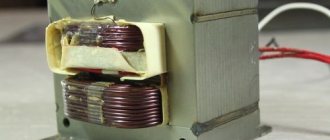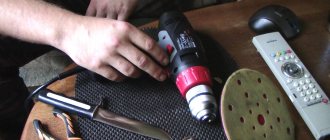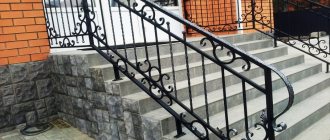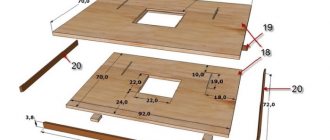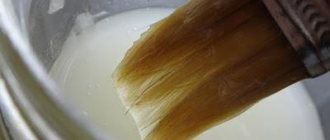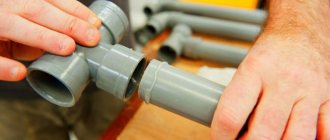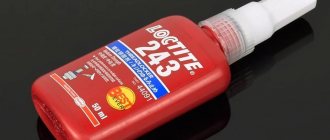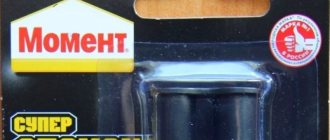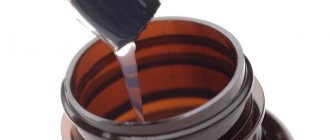Conductive glue is a handy adhesive for many cars and radio enthusiasts. It is used to repair glass heating filaments in cars, to seal wiring, and to solder contacts in keyboards, remote controls, household appliances, and other devices. An adhesive that does not conduct current may impair the performance of the equipment being repaired.
Features and Properties
The first electrically conductive compound was developed by Germany at the beginning of World War II. Initially it was used only in mechanical engineering. Over time it became universal. Now it is used as a solder when laying heated floors and heating systems, which is due to the ability of the adhesive solution to withstand high temperatures.
- It dries quickly, so gluing must be carried out without interruption.
- It has a high viscosity, which prevents the mixture from flowing into the boards.
- High adhesive characteristics ensure reliable adhesion to the surfaces being processed; it is well fixed on glass, plastic, etc.
- After drying, it can withstand temperatures up to +160 °C while maintaining its structure.
- Safe for humans and nature.
- The elasticity of the composition allows for spot application.
The conductive composition has low electrical resistance. Its use helps protect parts from damage, shock and vibration loads. Thanks to the conductor adhesive, the boards will not react to temperature changes.
Before use, you need to carefully study the composition of the glue and do not use products containing water. The composition and instructions for use are indicated on the original packaging of the glue. For microcircuits, wire contacts, cables, and other electrical elements, the water base is destructive. This composition will take a very long time to dry.
The current-carrying component in the adhesive is often graphite or nickel powder, silver or any other metal. The higher the content of the electrically conductive component, the worse the adhesion of the glue to the surface.
Purpose:
- you can repair computer cables and microcircuits;
- used when installing heating baseboards;
- used as linoleum adhesive when laying antistatic flooring;
- Defects in car electrical systems are eliminated, rear window heating is repaired;
- piezoelements are fastened in radio equipment;
- used when replacing the soldering of light-emitting diodes.
Work with conductive mixtures takes place indoors to minimize environmental pollution.
Where problems may arise
The main problem with conductive compounds is that it is difficult to make long paths with them . They are suitable for gluing small areas, for example, car filaments, but are not suitable for restoring voltage-carrying side buses. This is due to the fact that the glue dries very quickly (Permatex brand, Mastix). The way out of this situation is glue in the form of a marker; it is convenient for applying thin glue lines. Unlike a tube and brush, this method of application allows you to glue wires of various lengths without fear of the glue drying out too quickly.
For what surfaces
Adhesive containing silver is not compatible with materials such as nickel and aluminum. Combines well with silver, palladium, copper. An adhesive base containing nickel is considered universal. It has good adhesion and attaches to almost any surface.
Conductive glue dries within 2 minutes. It's fast and convenient, but not always relevant. What to do when the glue dries quickly and the parts are not yet fastened? Choose your adhesive according to what it will be joining. For example, Kontaktol Radio glue is designed specifically for conducting conductive communications on dielectrics. It adheres well to glass, metal, and plastic, maintaining optimal conductivity. Another type of glue of the same brand allows you to create contacts on any connectors and make cords without soldering. Another type of glue helps restore the conductivity of the heating filaments of a car window, so that the rear window is not covered with frost, creating a good view for the driver. They are similar in composition, but have different resistance and thermal conductivity.
Choosing glue in the store
Construction and hardware stores have a very wide selection of factory-made electrically conductive glue.
Contactol
Produced in Germany by the Keller concern. 3 products in this series have become famous.
- "Single-component contactol." It is possible to organize or restore a conductive connection on dielectrics (glass, polymers, textolite, etc.). Contains silver and synthetic resins. Has high adhesion and moisture resistance.
- "Kontaktol Radio". The base is graphite powder. The properties are similar to the previous composition, but the price is two times lower.
- "Kontaktol conductive marker". The basis is silver powder, palladium, and PVC resins. It has a convenient release form, you can glue parts in hard-to-reach places. Repair jumpers and conductive paths.
Contactol sets quickly. Complete polymerization of the seam in 6-7 hours. To speed up the final gluing, heat the treated area with warm air.
Permatex
Permatex glue (Permatex) is a two-component composition for the restoration of heating contacts. The connection made is resistant to vibration loads, not subject to ultraviolet radiation and temperature changes. It is better to work with glue at an ambient temperature of at least 10 °C.
TPK-E
It glues carbon fiber, aluminum and stainless steel, and any combination of materials can be used. On the treated area, you can create an electrical connection with a transition resistance. The composition and thickness of TPK-E allows static charges to be removed from the processed part.
Forbo 615 eurostar lino el
Floor coverings (linoleum, carpet) are “slung” onto Forbo electrically conductive glue. This is a translucent composition without a characteristic odor.
Done deal
Done Deal glue is made in the USA and has a polymer-silver composition. Used to restore contacts in cars and to restore heating filaments on windows. High quality adhesive with excellent adhesive properties.
Homakoll
It was developed specifically for gluing floor coverings that are produced in rolls and have a fabric or fleecy backing.
- The composition contains no toxic or volatile components.
- Minimum water content.
- Does not shrink after complete drying.
- After initial adhesion to the surface, the likelihood of shifting and peeling is minimal.
- Easy to apply with a notched trowel.
- Incombustible.
Mastix
Mastix adhesive based on nickel powder. It is used for the restoration of rear window heating threads in cars, filling gaps, cracks and holes, and gluing metal. The characteristics are similar to cold welding.
It is permissible to work at low and high temperatures. The quality of the connection in both cases does not decrease.
VolgaKhimProm
Restoration and reinforcing composition. Complete hardening, depending on the thickness of the applied layer, occurs in a maximum of an hour. Used in everyday life and industry. The glue is safe, without harmful effects on human skin, respiratory tract and mucous membranes.
Other brands
- Conductive adhesive Abro Masters. Produced in the United States of America. Repairing the rear window heating filaments.
- Forbo 523 adhesive for gluing linoleum and other floor coverings. Refers to dispersion compositions, frost-resistant, odorless, does not contain solvents.
- Baku BK 426 is an electrically conductive paste for restoring traces on microcircuits.
- Astrohim. Used in repairing glass heating filaments.
- Irpol 5. Elastic composition based on polyurethane components. Bonds antistatic floor coverings.
- Elekont. Epoxy resin based adhesive. Used when repairing a car. Ineffective, sometimes the application has to be repeated.
Application steps
The application of conductive glue takes place in several stages:
-
Preparatory stage.
The effectiveness of the glue largely depends on how well the surfaces being glued are processed. They may contain traces of oxides, dust, and grease, which, if not removed, will prevent good adhesion of the adhesive to the parts. If the glue “does not stick”, then this can result in low current conductivity and poor contact. Ethyl alcohol is used as a cleaning agent. It has a degreasing effect and removes traces of solder and oxides well. They are also easy to dilute very viscous adhesives. In addition to ethyl alcohol, isopropyl alcohol, diacetone alcohol, cyclohexane, and acetone are used.
- Determining the location of the rupture. The location of the break is determined by a multimeter or an electrical probe. As soon as it is determined, the power supply is turned off.
- Application of the composition. The process of applying glue to the surface is akin to a surgical operation. Work is sometimes carried out on microscopic areas (boards, electronic threads), which requires filigree precise application. It is best to use a drawing pen. If you don't have one, you can use a sewing needle for thick threads. In extreme cases, a regular toothpick will do. There are also self-adhesive stencils with a slot for precise application. The layer is applied to the damaged areas of the electronic threads, slightly overlapping them by a few millimeters.
- Composition correction. Depending on the composition and active metal filler, the adhesive has varying degrees of conductivity and resistance. Graphite conducts current well, but this composition does not bond well with the surface. The addition of powdered nickel, which stabilizes the conductive characteristics, will help improve adhesion. If it is necessary to increase elasticity and reduce density, you need to increase the polymer component. Polymers also protect against shock and vibration, and this must be taken into account when choosing adhesive for the rear window heating system of a car. Polymers seal well and have low thermal conductivity; the adhesive does not lose its properties due to temperature changes.
- Time to dry. The lower the ambient temperature, the longer it takes to dry. The rear window heater of the car turns on within 2 hours after repair, and the maximum waiting time is 2 days. To speed up the drying process, you can use a special hair dryer.
DIY conductive glue
Conductive mixtures can be made based on graphite, silver and aluminum.
Graphite based
The easiest way to make conductive glue at home is from graphite. Its main components are pencil lead and nail polish.
You can take the cheapest varnish, it is important that it is transparent, since colored varnishes contain paint that can disrupt the electrical conductivity of the glue. A paste or liquid for gluing false nails is suitable; you can buy the cheapest quick-drying glue, such as “Moment”, “Second”, “Elephant”.
The graphite composition is prepared as follows:
- if you are using nail glue rather than polish, unroll the foil of the tube from the back side;
- remove the lead from a simple pencil, the pencil should be soft (M2, M4);
- grind the lead into a fine powder;
- pour the powder into a tube or bottle;
- mix the ingredients thoroughly with a toothpick;
- Close the tube with the graphite composition again, and clamp the edge with pliers.
If the tube is not closed tightly, the contents may dry out prematurely. Avoid getting air inside. If the resulting glue accidentally spills or is applied unsuccessfully, remove the excess with acetone or nail polish remover.
Graphite can be obtained not only from a pencil. It is found in copper-graphite brushes or salt batteries. You can use sandpaper or a needle file to transform the graphite into powder. The extracted powder can be mixed in a 1:1 ratio with tsaponlak until a creamy mass is formed. An adhesive mixture based on graphite from brushes will be more effective, since it contains an admixture of copper, which increases the electrical conductivity of the product.
Silver based
To make conductive silver-based adhesive, the following components are needed:
- formalin 1%;
- silver nitrate or nitric acid;
- ammonia 5%.
Silver and formaldehyde are mixed in equal parts, and then diluted with a few drops of ammonia. After a couple of minutes, a reaction will occur and silver powder will settle to the bottom of the container. To extract it, the liquid is filtered. The resulting powder is dried at a temperature of 120-150 °C.
To make glue, silver powder is added to varnish or glue, as in the instructions for making graphite glue. Before mixing the components, a little alcohol is dripped into the adhesive solution to slightly dilute it.
There are several more recipes.
- Combine 0.13 kg of silver powder and 12 g of graphite. 8 g of nitrocellulose, 0.05 kg of acetone and 3 g of rosin are mixed into them. If the mass is too thick, dilute it with acetone. The product can be used immediately after preparation, but for the most part not for gluing parts, but as an electrically conductive primer.
- 0.03 kg of graphite is mixed with 0.07 kg of silver powder, 0.07 liters of acetone and 0.06 kg of vinyl acetate are poured into the mixture. After mixing the components, an electrically conductive syrup is obtained, which can be used to coat other adhesives, for example, BF.
Aluminum glue
To create it, aluminum powder is added to epoxy glue or resin.
Epoxy polymerizes quickly when a hardener is added, so aluminum powder must be added to the resin before the liquid component is added.
Aluminum and epoxy are mixed until creamy, then a portion of the homogeneous mixture is measured and combined with a hardener in a ratio of 1:10.
Specifics of using homemade glue
If you need to repair expensive electronics, it is better not to save money and buy high-quality store-bought glue, or even give the equipment into the hands of a specialist. If you need to repair the remote control or have a simpler task, you can prepare a homemade mixture according to the recipes above. This will save you money on buying a ready-made product. The only problem that is typical for all homemade adhesives is that they have a limited shelf life. You need to prepare a small portion, which is used at a time.
Flaws
Despite all the advantages of conductive glue, it is not without its disadvantages, which include:
- high cost of glue due to the presence of fine silver, gold, palladium and nickel in its composition;
- the product contains synthetic resins , polymers, metal additives that are unsafe for human health ;
- You can find out how glue of a particular brand will demonstrate its conductive properties only during application;
- does not attach to every surface;
